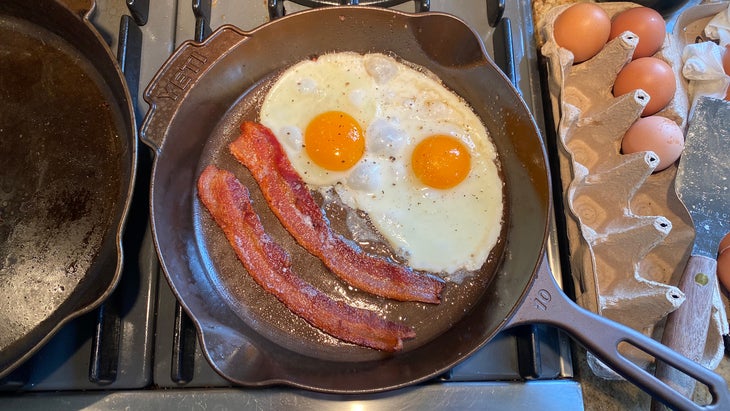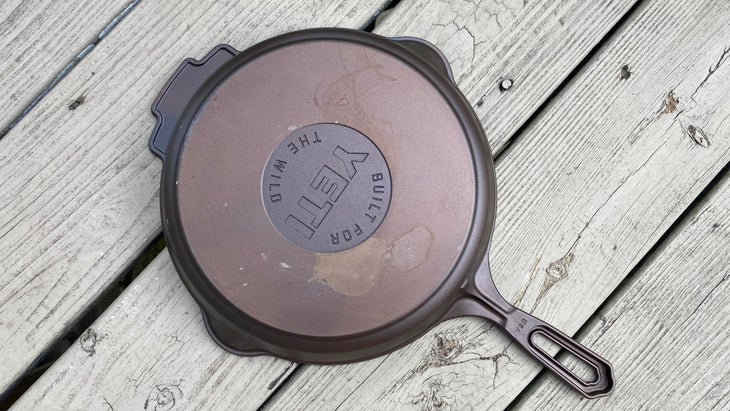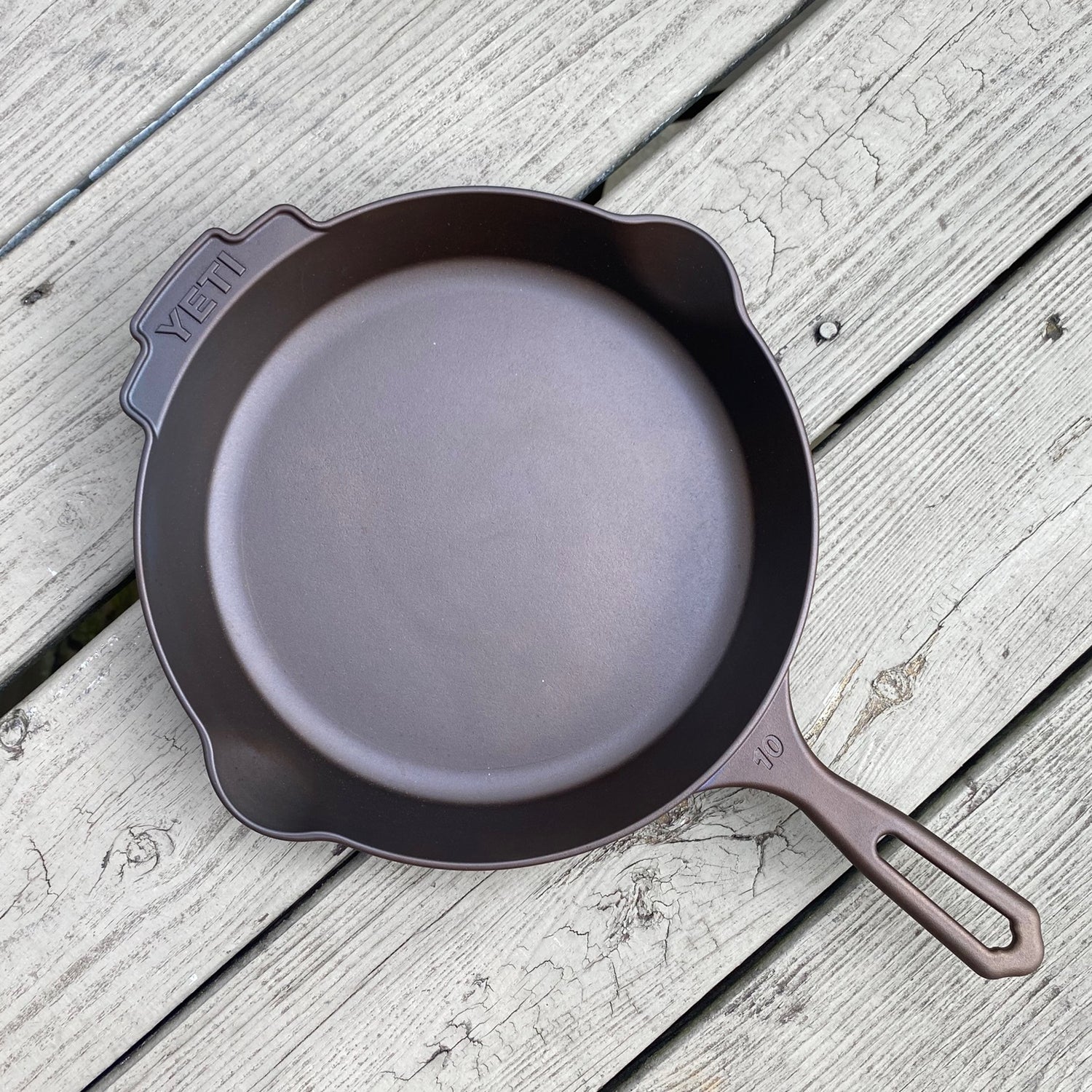Yeti got its start making coolers so useful and durable they were proudly . When it began making coffee mugs, we made sure they would survive a shotgun blast (why not?). We never expected Yeti to make a cast-iron skillet, but the company has come so far from its days as a cooler brand, we’ve stopped scratching our heads as to why it chooses to enter new categories of gear. We just see how the new products stack up.
Last year, Yeti teamed up with cast-iron company to lend its name to a limited edition 12-inch Butter Pat iron-cast skillet that sold out quickly despite its $400 price point (which wasn’t much higher than or ). While the sticker price was criticized (a , after all), the partnership went so well that Yeti purchased Butter Pat and rebranded its skillet, which was renowned for having a hyper smooth surface and lighter feel than competitors.
Yeti was not a cast-iron-skillet manufacturer. Now it is. The Butter Pat skillet is reborn as Yeti’s new American-forged cast-iron skillet collection. It’s available in three sizes, starting at , , and .
“We truly believed Butter Pat makes the best pan that’s out there because of their engineering practice and how it is a simple product that is straightforward,” said Steve Barnett, Yeti’s Principal Product Manager for these skillets. “… We want to keep the same manufacturing process that they had at Butter Pat. We don’t want to change anything but we do need to scale. We partnered with a foundry that we think is the best in the world and happens to be here in the US, in Wisconsin.”

Yeti Cast-Iron Skillet
If you buy through our links, we may earn an affiliate commission. This supports our mission to get more people active and outside. Learn more.
Testing Yeti’s New Skillet
���ܳٲ������’s Mary-Frances Heck, a James Beard Award winner, , and former senior food editor of Food & Wine, has spent the last few days cooking all kinds of things on the new Yeti Cast Iron Skillet 10 and 12.
Her first takeaway was the incredible seasoning and hyper-smooth finish it has right out of the box. “You put a little bit of fat in the brand new pan and crack a couple of eggs in, they are just going to slide around. It is amazing,” said Heck, who has restored dozens of heritage cast-iron skillets and loves talking about the reactive nature of cooking on them. In her experience collecting vintage cast iron and cooking with new and old pans, only Butter Pat (now Yeti) and Smithey cook like vintage cast iron. At 6.25 pounds, Yeti’s new 12-inch pan comes in lighter than Smithey’s high-end model, which also has a handle design that makes it difficult to maneuver the heavy pan over the stove with one hand.
“It is surprisingly light for its size,” Heck explained. “You don’t pick it up and think your wrist is going to break.”
The skillet’s hyper smooth finish comes from a ceramic-like mold rather than the sand molds often used for standard cast-iron skillets. The process creates a surface that can slide an egg like teflon but also maintains cast iron’s ability to hold on to seasoning. It also makes the skillets considerably more challenging to manufacture. “It takes weeks, not days to make our pans, but it is worth it for the end product,” said Steve Barnett. “We got down to the microstructure and worked to have the pan hold on to the seasoning better from the start.”
The distribution of cast iron throughout the pan was another touch that we noticed and appreciated, much like we did with the Butter Pat model. It’s thicker and heavier at its base to help put a serious sear on steaks, but its sides are thinner than you’d expect. This subtle geometry was made possible by the manufacturing process and high-end molds used.
“These are the nicest cast iron skillets you can buy new, probably, period,” explained Heck. “Unless you can get a skillet that was forged a hundred years ago—nothing on the market right now is like this.”

Yeti’s Journey into Cookware
Though we weren’t startled by the decision, we did wonder why Yeti decided to buy a cast-iron pan maker to get into cookware. So we asked Barnett: “We’ve always been in the culinary space. People eat chili out of our mugs and the pros use our coolers to keep briskets warm.”
It also looks like you should expect more cooking products from Yeti, much like how its coffee mugs grew into a full drinkware line. “I can’t get into specifics about exact products but we do see this part of the business growing for us,” Barnett said. “If it is a tool that works exceptionally well and we are able to lean on really high quality manufacturing processes and the right materials then we are looking at making it.”
I have a 20-year-old cast-iron pan that has never seen a centiliter of dish soap but has seen dozens of hours of tender care. It sears steaks perfectly every time and is the only surface I can cook fresh tortillas on with any success. It is honestly more like an old friend than a piece of cookware.
Personally, I like the idea that the company that made my first forever-cooler is also making my next forever-skillet. “There is something very inherently Yeti about having a product that you can use forever. This one truly gets better with age,” Barnett said.


